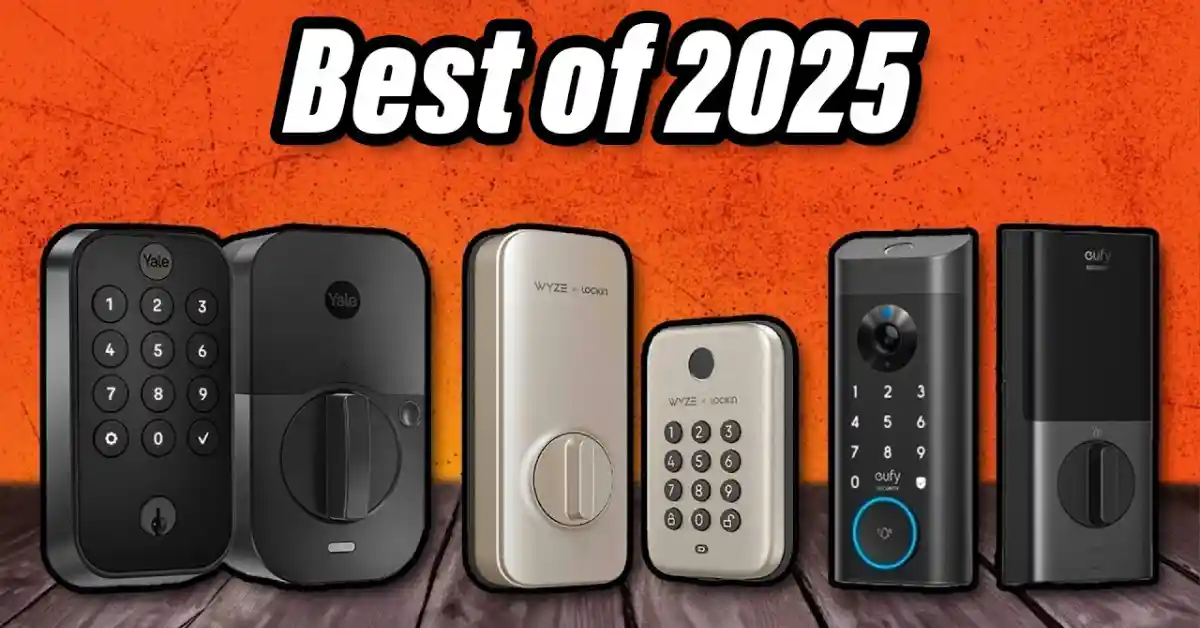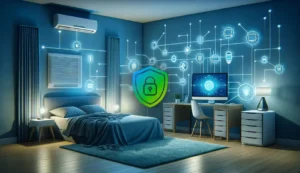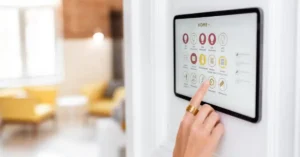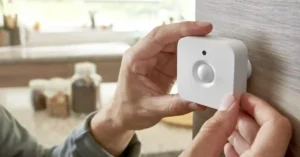Introduction: Why Smart Security Is More Than Just Convenience
Security is one of the biggest concerns for homeowners, and in 2025, technology is at the center of protection. Smart locks and alarms have moved from luxury gadgets to mainstream safety tools. Beyond convenience, they help reduce burglary risks, protect families, and even lower home insurance premiums. But are these devices really worth the investment? And which features matter most for homeowners today?
What Are Smart Locks and Alarms? (Quick Answer)
Smart locks are electronic locks that let you unlock and manage doors using smartphones, keypads, voice assistants, or biometrics.
Smart alarms include motion sensors, window/door contacts, and sirens, often connected to a central hub or app, to detect and alert homeowners of intrusions. Many are professionally monitored for faster emergency response.
Together, they create a connected system of preventive security, giving homeowners both control and peace of mind.
Why They Matter in 2025
Traditional locks and alarms still work, but burglars are more sophisticated, and insurers are more data-driven. Smart devices provide:
- Better deterrence: Visible smart locks and cameras discourage break-ins.
- Remote access: Control and monitor doors or alarms from anywhere.
- Integration: Connect with video doorbells, cameras, and voice assistants.
- Insurance savings: Lower risk means potential discounts on premiums.
According to FBI burglary statistics, homes without security systems are 300% more likely to be broken into. Insurance companies recognize this and reward proactive homeowners.
How Smart Locks Work
- Keyless entry: Use PIN codes, fingerprint scans, or mobile apps.
- Temporary access: Give guests, contractors, or family timed codes.
- Alerts & logs: Get notified when doors are locked/unlocked.
- Integration: Works with voice assistants (Alexa, Google Home) and hubs (SmartThings, Apple HomeKit).
Popular 2025 features:
- Biometric unlocks (fingerprint, facial recognition).
- Auto-lock timers for added safety.
- Remote “lock check” confirmations via mobile app.
How Smart Alarms Work
Smart alarm systems include:
- Entry sensors: Detect if doors/windows open.
- Motion sensors: Monitor rooms for unexpected movement.
- Glass break sensors: Alert if a window is smashed.
- Siren & notification system: Trigger alerts, sirens, and emergency dispatch.
Most modern systems are wireless, app-controlled, and expandable, meaning you can start small and add more devices later.
Do Smart Locks & Alarms Lower Insurance Premiums?
Yes. Most insurers now provide discounts between 5–10% for homes with smart locks, monitored alarms, or full security systems. The savings vary based on:
- Monitoring: Professionally monitored systems earn bigger discounts than DIY setups.
- System integration: Full smart security bundles often bring higher credits than single devices.
- Insurer partnerships: Some insurers partner with device brands (e.g., Ring, SimpliSafe, ADT) to offer additional savings.
Example: A homeowner with a $2,000 annual premium could save $200 annually with a monitored smart security system. Over 10 years, that’s $2,000 in savings, often more than the cost of the devices.
Best Brands & Features in 2025
Top Smart Locks:
- August Wi-Fi Smart Lock (2025): Auto-locks, remote access, biometric compatibility.
- Yale Assure Lock 2: Sleek design, keypad + app integration.
- Level Lock+: Hidden design, integrates with Apple HomeKey.
Top Smart Alarm Systems:
- Ring Alarm Pro: Combines Wi-Fi router with alarm hub, full integration with Ring cameras.
- SimpliSafe Gen 4: Affordable, expandable, and offers professional monitoring.
- ADT Command: Premium professional system with advanced monitoring and AI response.
Key features to look for:
- Battery backup for power outages.
- Cellular connectivity for internet failures.
- Easy app integration with cameras and sensors.
Real-World Case Studies
- Smart Lock Deterrence: In New York, a family avoided a break-in when burglars failed to bypass their biometric smart lock. The attempted burglary was recorded by their video doorbell and reported instantly.
- Alarm Saves Valuables: A Texas homeowner received a phone alert at work when a door sensor was triggered. Police responded before any theft occurred, preventing what could’ve been a $20,000 loss.
- Insurance Discounts: A California homeowner cut their annual premium by 8% after installing a professionally monitored alarm system, saving nearly $1,600 over eight years.
Challenges & Considerations
- Cybersecurity risks: Smart locks and alarms are IoT devices, meaning they can be hacked if not updated regularly.
- Power and internet dependence: Battery and cellular backups are critical.
- False alarms: Poor setup or overly sensitive sensors can trigger unnecessary alerts.
- Upfront cost: Smart locks cost $200–$400 each; alarm systems $300–$800 upfront, plus monitoring fees ($15–$40/month).
Who Should Invest in Smart Locks & Alarms?
- Urban homeowners: Higher burglary risks and better insurance savings.
- Families: Remote monitoring provides peace of mind for kids or elderly relatives.
- Frequent travelers: Ability to lock/unlock doors and monitor home remotely.
- Landlords/Airbnb hosts: Temporary access codes improve convenience and safety.
Key Takeaways
- Smart locks and alarms enhance both safety and insurance savings.
- Discounts range from 5–10% depending on devices and monitoring.
- Best brands in 2025 include August, Yale, Ring, SimpliSafe, and ADT.
- Consider cybersecurity, backup systems, and monitoring fees before buying.
- These devices often pay for themselves within a few years through discounts and avoided losses.




